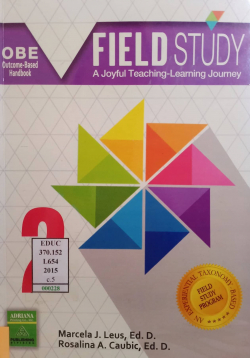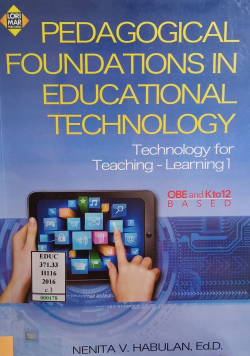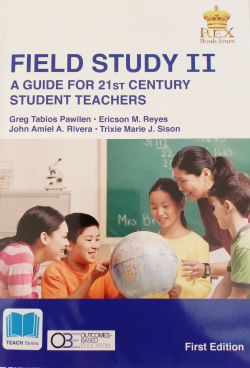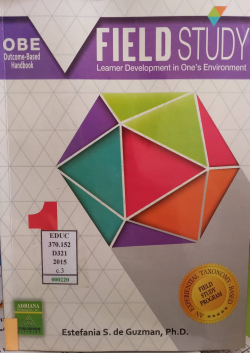Teaching and learning languages and multiliteracies: Responding to the MTB-MLE challenge
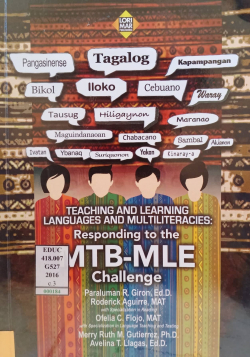
Buy online ($)
Type
Book
Authors
ISBN 13
9786218035003
Category
EDUC
[ Browse Items ]
Publication Year
2016
Publisher
LORIMAR PUBLISHING, INC., Philippines
Pages
vi, 246 pages
Subject
Linguistics
Abstract
This book is a collaborative effort of five authors who, one way or another, played key roles in the conceptualization and design of the Philippine K to 12 curriculum. The book was conceptualized to address the growing clamor of pre-service and in-service teacher for a reference material that will equip them in implementing Mother Tongue-Based Multilingual Education (MTB-MLE) in the Philippines. Through this book, teachers will have a more concrete idea on how to localize and contextualize the national standards (content and performance) and learning competencies to different needs of students (cognitive, linguistic, and cultural), considering their locality and immediate community, thereby ensuring relevance in the teaching-learning process.
This book is composed of five (5) chapters which are strategically sequenced from theory to practice. Each chapter has a pre-assessment and post-assessment that allow readers to monitor their understanding of the concepts and activities that will be discussed thoroughly in the lessons.
Chapter 1 provides the theoretical underpinnings of first and second language acquisition and learning. It is divided into 3 lessons which discuss sociological and cultural perspective of language, first language acquisition (FLA) and literacy development, and language development and second language.
Chapter 2 relates the educational history of language policy development in the Philippines. It discusses the reforms done in the county to overcome foreign language handicap and provides an opportunity to analyze the policies, surveys and studies the affect the language of instruction.
Chapter 3 introduces and explains the Mother Tongue-Based Multilingual Education (MTB-MLE) framework in the country and how it is implemented in the basic education curriculum. It elucidates the importance of the basic element of the MTB-MLE framework in order to facilitate informed application of these concepts and process in the teaching-learning process.
Chapter 4 provides the approaches, methods, and strategies in teaching the basic language and literacy skills to effectively implement the MTB-MLE in the classroom. Chapter 4 focuses on the development of oracy to literacy moving towards the approaches and strategies in teaching comprehension and ends with activities and strategies for phonological awareness development.
Finally, the book culminates with Chapter 5 that deals with assessment of early literacy skills. This chapter tries to equip readers with the knowledge on how to use appropriate types and forms of language assessment to evaluate particular language outcomes.
This book is composed of five (5) chapters which are strategically sequenced from theory to practice. Each chapter has a pre-assessment and post-assessment that allow readers to monitor their understanding of the concepts and activities that will be discussed thoroughly in the lessons.
Chapter 1 provides the theoretical underpinnings of first and second language acquisition and learning. It is divided into 3 lessons which discuss sociological and cultural perspective of language, first language acquisition (FLA) and literacy development, and language development and second language.
Chapter 2 relates the educational history of language policy development in the Philippines. It discusses the reforms done in the county to overcome foreign language handicap and provides an opportunity to analyze the policies, surveys and studies the affect the language of instruction.
Chapter 3 introduces and explains the Mother Tongue-Based Multilingual Education (MTB-MLE) framework in the country and how it is implemented in the basic education curriculum. It elucidates the importance of the basic element of the MTB-MLE framework in order to facilitate informed application of these concepts and process in the teaching-learning process.
Chapter 4 provides the approaches, methods, and strategies in teaching the basic language and literacy skills to effectively implement the MTB-MLE in the classroom. Chapter 4 focuses on the development of oracy to literacy moving towards the approaches and strategies in teaching comprehension and ends with activities and strategies for phonological awareness development.
Finally, the book culminates with Chapter 5 that deals with assessment of early literacy skills. This chapter tries to equip readers with the knowledge on how to use appropriate types and forms of language assessment to evaluate particular language outcomes.
Description
Illustration ; 26 cm ; Newsprint
Includes bibliographic reference
Includes bibliographic reference
Number of Copies
3
| Library | Accession No | Call No | Copy No | Edition | Location | Availability |
|---|---|---|---|---|---|---|
| Main | 182 |
EDUC 418.007 G527 2016 |
1 | EDUCATION REFERENCE | Yes | |
| Main | 183 |
EDUC 418.007 G527 2016 |
2 | EDUCATION REFERENCE | Yes | |
| Main | 184 |
EDUC 418.007 G527 2016 |
3 | EDUCATION REFERENCE | Yes |
